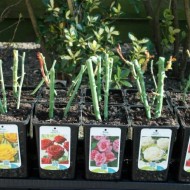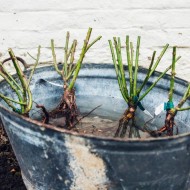What attracts the Kerio hybrid tea rose gardeners: reviews and photos
Content
The history of the Kerio hybrid tea rose
The Dutch company Lex + is known among gardeners and florists for the high quality of its products. One of the achievements of this company is the Kerio + hybrid tea rose, popularly called Kerio. The decorative culture was registered in 2002 under the name Luxuries (there is a variant of Lexories).
A bright flower with a spectacular appearance, it has a wide range of applications. Rose Kerio is actively used in the landscape, as well as in floristry. In the cut state, the bud retains its decorative qualities for a long time.
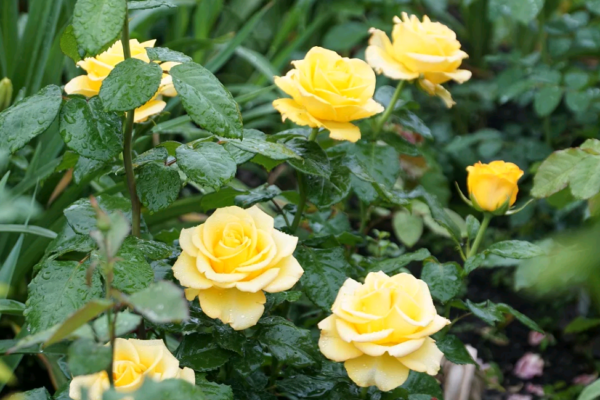
Description and characteristics of the variety
The Kerio rose bush is compact, tall, slender. Depending on the growing conditions, the height of the bush ranges from 60 to 120 cm. The shoots of the variety are erect and slightly thorny. Due to the small number of thorns, the flower is convenient to hold in a bouquet. The variety is characterized by a dark green foliage color, there is a glossy shine. A light burgundy shade along the edge of the leaf plate is considered the norm.
Kerio buds are of the correct goblet shape. As it blooms, the flower takes on a cupped shape, while the core remains closed. The buds are double and large. So, in one flower, there are about 40 petals. The diameter of the bud varies from 10 to 15 cm. A unique feature of the variety is the juicy amber-yellow color of the flowers. When the bud is fully open, a thin orange stripe appears along the edge of the petals. The plant retains the brightness of the color even under the influence of direct sunlight.
The flowering of the variety is prolonged. The buds open within 14-18 days. The petals retain their decorative appearance for a long time. The second wave of flowering begins towards the end of summer and lasts until the very frost. The rose emits a pleasant, mild aroma.
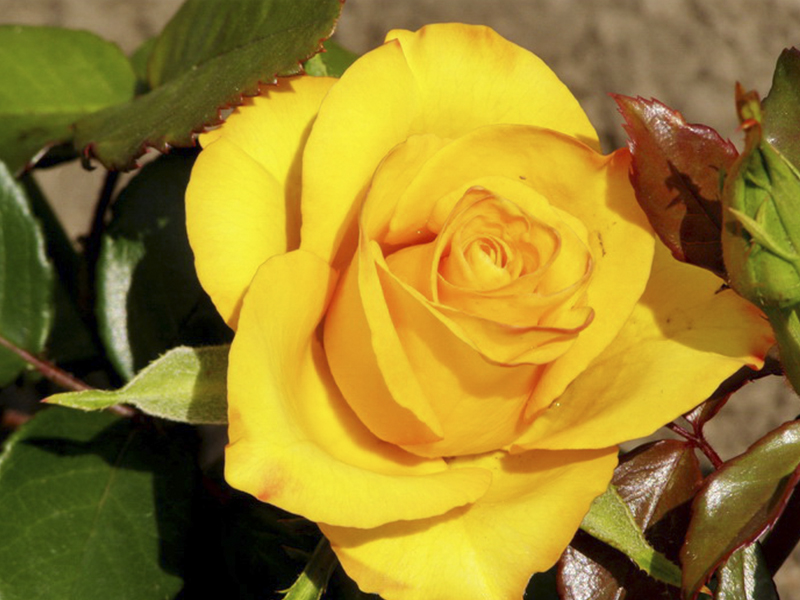
Advantages and disadvantages of the variety
The spectacular Kerio rose has many positive qualities that attract the attention of gardeners and landscape designers. In fairness, it is worth noting the negative aspects of the plant.
- compact shrub with a spectacular appearance;
- long flowering period;
- bright color of buds;
- lack of tendency to burnout;
- preservation of the shape of the bud during heavy rainfall;
- undemanding to growing conditions;
- wide range of applications;
- preservation of decorative qualities in cut form.
- exposed to invasions of rose-colored aphids;
- high probability of freezing of the shoots of the current year.
Video "A detailed review of the Kerio rose"
This video tells about the peculiarities of growing a hybrid tea variety.
Correct planting of hybrid tea roses
Growing a garden rose begins with planting it. An unsuccessfully chosen growing site is one of the common reasons for the low survival rate of seedlings.
Optimal growing conditions
Having a high resistance to fading, the Kerio rose is not afraid of active sunlight. Close groundwater, wind and draft should be avoided. Growing a queen of flowers in a wind-blown area is fraught with frequent diseases and loss of decorativeness.
The soil should be moderately loose and fertile. The optimum level of the acid-base reaction of the soil is from 5.6 to 7.3 pH. Too heavy and salty environment does not allow the plant to develop normally. Flowering in this case will be poor and short-lived.
Selection and preparation of seedlings
Seedlings with a closed root system, purchased in late March or early April, take root best of all. You need to buy planting material in horticultural nurseries. The seedling should have a healthy appearance, an even root collar, a multilevel root system and a mature aerial part.
The preparation of planting material involves a thorough examination for signs of disease and the presence of insects. To increase the adaptive abilities, experienced gardeners recommend treating the rootstock of the seedling with a solution of the growth biostimulator "Epin" or "Zircon".
- The Kerio variety is not afraid of the active sun
- Seedlings need to be bought in specialized nurseries.
- Preparing seedlings for planting
Planting recommendations
A seedling is planted in open ground in early May. The average parameters of the planting pit are 50x50 cm. It is necessary to focus on the dimensions of the aboveground and underground parts of the planting material. A distance of 40-50 cm is maintained between the holes, at least 100 cm between the rows.
Planting Kerio roses is carried out in a well-drained and well-humidified environment. A mixture of peat, sand and manure will help to increase the fertility of the soil. When planting, the root shoots are carefully straightened, avoiding creases, and the root collar is deepened by 4–5 cm. The seedling is sprinkled with fertile soil, carefully tamped and mulched abundantly with sawdust. A groove for irrigation is formed along the edge of the trunk circle.
Proper care for the Kerio rose
Compliance with simple agronomic measures increases the vitality of the plant and has a beneficial effect on its flowering.
Watering and soil care
Kerio is a moisture-loving variety. However, do not forget that excess moisture in the soil leads to rotting of the root collar. In the absence of natural precipitation, the ornamental bush is moistened 2-3 times a week. Water the plant along the edge of the trunk circle.
Tap water should not be used to water roses, as it is too hard for an ornamental shrub. Chlorine and salt deposits negatively affect the development of the plant. It is better to use melt, rain or settled water with a temperature of +16 to +20 ° C.
When the water is absorbed, the topsoil is loosened. This procedure allows you to saturate the substrate with oxygen.
Top dressing before flowering
In spring, rose bushes are fed with urea and other nitrogen-containing preparations. Nitrogen contributes to the growth of green mass, which increases the decorative effect of the shrub.
During the flowering period and at its end, the Kerio rose is fertilized with potassium-phosphorus compositions for ornamental flowering crops. You can also use water-diluted manure.
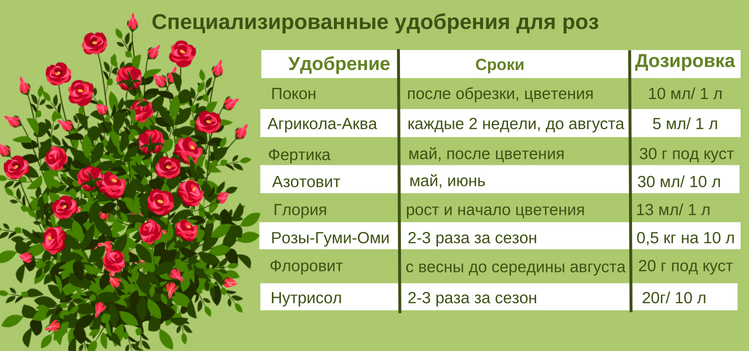
Preparing for winter
Kerio + belongs to the winter-hardy varieties. However, the instability of the temperature regime in winter leads to freezing of young shoots and root shoots.
In order to prevent the death of the shrub, measures are taken to insulate it. Rose shoots are cut into 2/3 parts, and the root zone is abundantly mulched with peat and dry soil.From above, the bush is covered with agrofibre stretched over a metal or wooden frame.
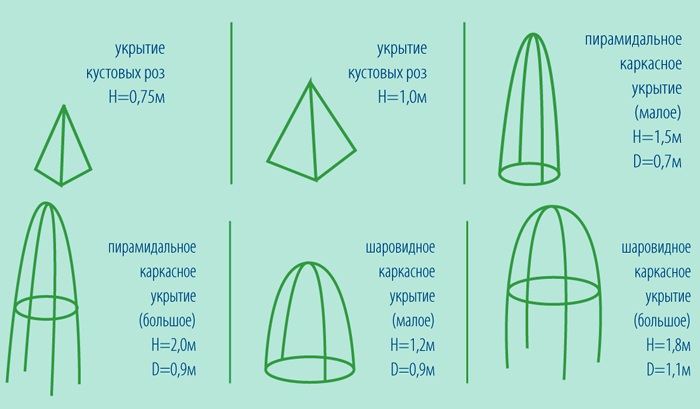
Pest and disease control
The Kerio variety is resistant to invasions of most pests. But unfortunately, the culture attracts the attention of the rose aphid, which, with a mass population, is capable of destroying the entire rose garden. For the prompt removal of pests, insecticidal preparations "Aktara", "Iskra", "Decis", "Kinmiks" or "Inta-Vir" are used.
Failure to comply with agricultural techniques may develop gray mold, powdery mildew and various types of spotting. Fungicides "Fundazol", "Topaz", "Profit Gold" and "Ridomil Gold" will help protect the rose from death.
Gardeners reviews
“Kerio rose is my favorite. Subject to simple agrotechnical measures, the plant responds with active and long flowering. "
“I have been making floristic compositions for many years. Recently I discovered a unique flower - the Kerio rose. The plant has a spectacular appearance and retains its decorative qualities in a bouquet for a long time. "
Rose Kerio will appeal to both experienced and novice flower growers. The ornamental culture is distinguished by relatively low requirements for growing conditions and care.


